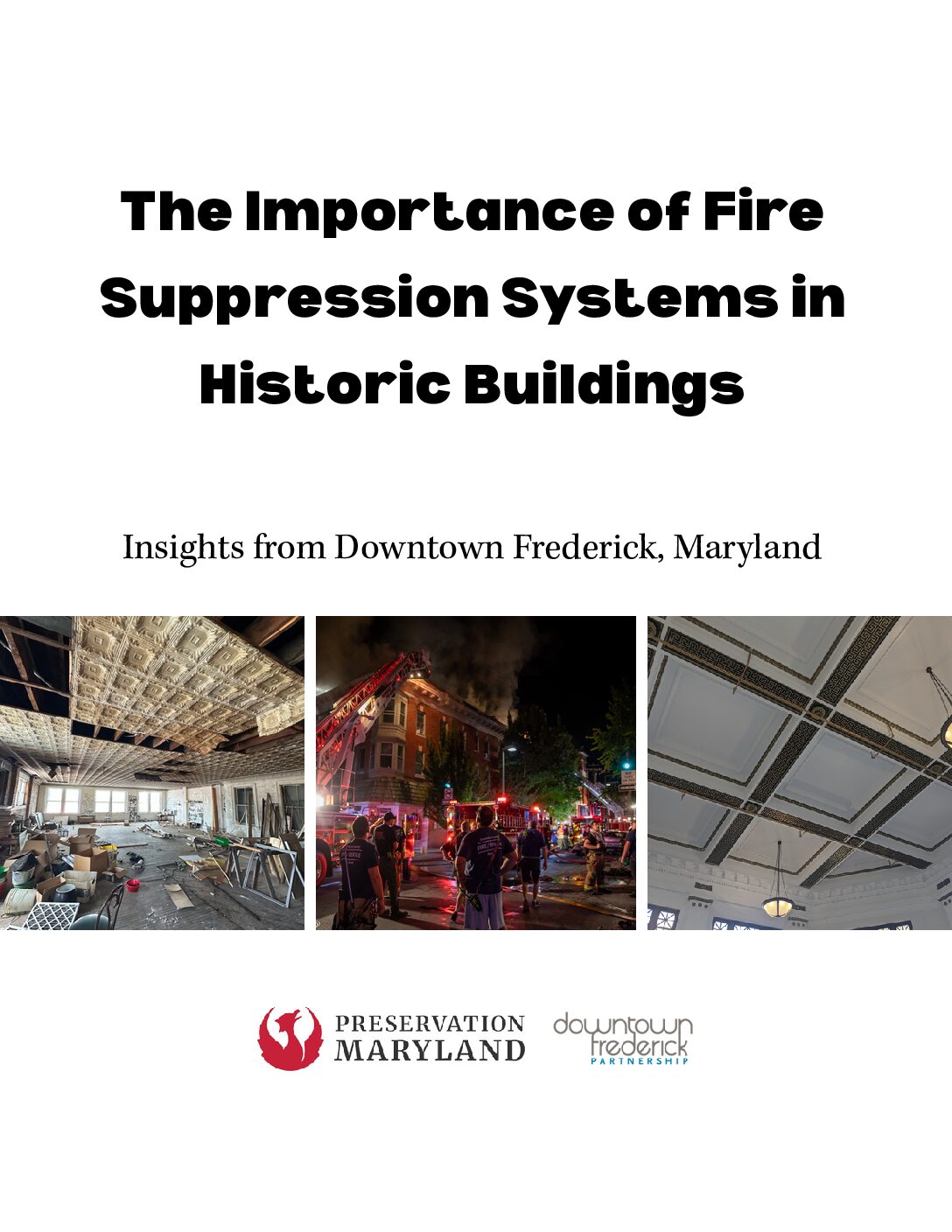Historic buildings give downtowns their unique character—and in places like Downtown Frederick, Maryland, they’re the economic engine too. But these cherished structures, particularly in compact downtowns are vulnerable to fire. A new report, The Importance of Fire Suppression Systems in Historic Buildings: Insights from Downtown Frederick, Maryland co-produced by Preservation Maryland and Downtown Frederick Partnership, sheds light on the importance of modern fire suppression systems in historic buildings and what it takes to get them installed.
Here are the top takeaways:
1. Fire Safety = Community Safety + Economic Stability
Installing fire suppression systems is about more than just code compliance. Sprinklers save lives, protect irreplaceable architecture, and reduce the risk of devastating losses for local businesses. In Downtown Frederick, three major fires in recent years impacted six historic buildings and dozens of businesses.
2. Few Historic Buildings Have Sprinklers
Less than 15% of Downtown Frederick’s commercial and mixed-use buildings are equipped with fire suppression systems. That’s a problem—not only for safety but also for development. Without sprinklers, upper floors often sit vacant, limiting housing and commercial space potential.
3. The Cost is High—But So Are the Rewards
Case studies from the report show fire suppression projects often cost over $100,000, with waterline upgrades making up a large share. But these upgrades open the door to more apartments, event venues, and restaurants—bringing new life to historic buildings.
4. Public Incentives Work
Communities like Frederick, Annapolis, and Cumberland are stepping up. Downtown Frederick Partnership offers up to $25,000 in grants for sprinkler installations, funded through Community Legacy dollars. Cumberland replaced downtown waterlines at no cost to property owners to support sprinkler retrofits and upper-floor use.
5. Removing Regulatory Barriers is Key
Fire suppression is only part of the equation. Safe egress and restrictive building codes—like those limiting single-staircase buildings—also stand in the way of upgrading historic spaces. Maryland’s recent passage of House Bill 489, backed by Delegate Vaughn Stewart, to study and modernize these codes is a promising step.
6. We Need a Bigger Toolbox
The report recommends several ways to scale fire safety retrofits:
- Establish state and county-level funding for infrastructure upgrades
- Provide clear guidance on regulatory requirements
- Expand financial incentives for private investment
Bottom Line:
Fire suppression systems are critical to the safety, reuse, and vitality of historic downtowns. With the right mix of financial support, policy reform, and public investment, communities like Frederick can protect their heritage—and unlock their full economic potential.
Read the full report to learn more about the real costs, lessons, and opportunities from Downtown Frederick’s fire suppression journey. This blog draws from “The Importance of Fire Suppression Systems in Historic Buildings: Insights from Downtown Frederick, Maryland,” produced by Preservation Maryland in partnership with Downtown Frederick Partnership.

